In modern computing, one of the fundamental concepts to understand is the machine cycle, which is integral to the functioning of a CPU or central processing unit. The machine cycle encompasses the sequences of steps that a processor goes through to execute a single instruction. It’s a continuous, repeating process that ensures that a computer can perform tasks by executing program instructions.

The machine cycle includes four main steps: fetching the instruction from memory, decoding the instruction to understand what action is required, executing the command, and storing the result. Each step is crucial to the overall operation of the computer, allowing it to operate efficiently and effectively. Understanding these steps gives insight into how software and hardware interact, how processor performance is gauged, and how advancements in technology continue to influence CPU architecture.
Key Takeaways
- The machine cycle is critical for a processor to execute instructions.
- Execution hinges on four steps: fetching, decoding, executing, and storing.
- These cycles are central to evaluating processor performance and CPU design.
Understanding the Machine Cycle

The machine cycle is a fundamental concept in computer architecture, integral to understanding how a computer’s central processing unit (CPU) operates. It encompasses the sequence of steps a CPU follows to process instructions. These instructions are critical for performing all the tasks a computer carries out. The machine cycle is composed of four primary stages: fetch, decode, execute, and store.
Fetch: This is the initial stage where the CPU retrieves an instruction from the computer’s memory. The instruction’s location is determined by the program counter, which then readies it for processing.
Decode: Once fetched, the CPU interprets what the instruction entails. This step involves breaking down the instruction into something that the CPU can understand and act upon.
Execute: The deciphered instruction is carried out by the CPU’s various components. Depending on the instruction, this may involve performing calculations, moving data, or other operations.
Store: The final stage involves writing back the result of the executed instruction to the memory or a register for future use or output.
These steps occur in a rapid succession, and typically, each step is completed in one clock cycle. The efficiency and speed at which the machine cycle operates have a direct impact on the overall performance of the computer. Understanding these stages helps in grasping how complex operations are simplified into manageable actions that the CPU can rapidly perform, making modern computing possible.
Fetch Cycle
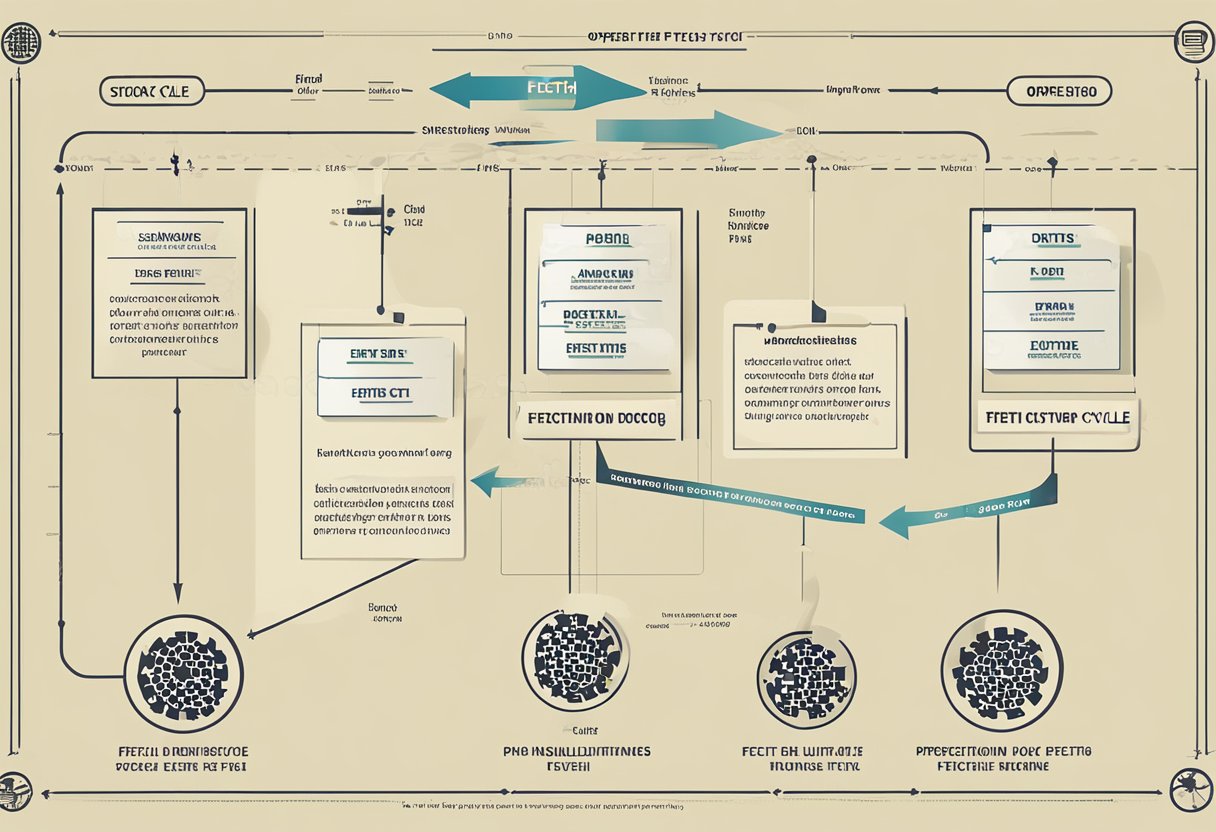
During the fetch cycle, the CPU starts executing a program by reading the first instruction from the memory. This step involves several crucial hardware components working together to access the binary instruction that the CPU needs to perform the desired action.
Role of the Program Counter
The program counter (PC) holds the memory address of the next instruction to be fetched. This advances with each fetch cycle, ensuring the CPU processes instructions in the correct sequence.
Function of the Instruction Register
The instruction register (IR) serves as a holding cell for the current instruction during execution. Once the fetch process is complete, the binary instruction is placed into the IR from memory.
Memory Address Deciphering
To obtain the necessary instruction, the memory address must be deciphered. The control unit of the CPU instructs the memory to send the instruction at the address provided by the program counter. After fetching, the instruction is converted from its memory form into a format usable by the CPU.
Decode Cycle
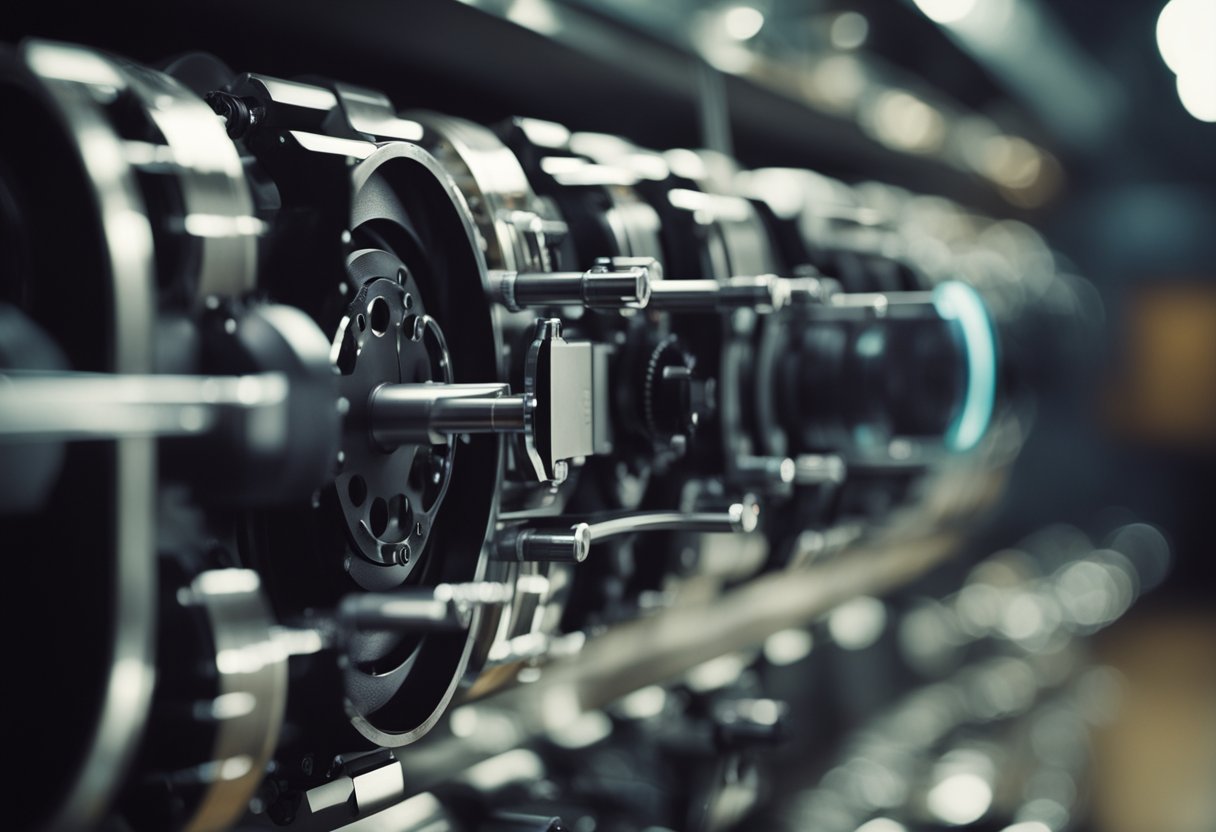
During the decode cycle in a machine’s operation, the control unit of the CPU plays a pivotal role in interpreting the opcode and operand field of an instruction so that it can be processed correctly.
Decoding Process
The decoding process is initiated by the control unit after an instruction is fetched. This phase is critical as it translates the opcode (operation code) of the fetched instruction into signals that can inform the rest of the CPU on how to execute the instruction. The operands, if present, are also identified during this phase. These are the specific data the operation will act upon.
Instruction Interpretation
In the instruction interpretation stage, the control unit delves into the details of the instruction. It examines the opcode to determine which operation the Arithmetic Logic Unit (ALU) must perform. The operand field of the instruction provides the necessary context, specifying the data or memory addresses involved in the operation. This precise interpretation allows the CPU to execute the instruction efficiently in the subsequent cycle.
Execute Cycle

In the machine cycle, the Execute Cycle is crucial as it is where the CPU performs the action dictated by the instructions. It engages both the arithmetic and logical facets of processing.
Execution of Instructions
During the Execute Cycle, the CPU acts upon the decoded instructions. This stage sees the translation of decoded data into meaningful actions: arithmetical and logical operations are conducted, data is transferred within the CPU or between the CPU and I/O devices, and branching decisions are made depending on conditional statements.
Arithmetic Logic Unit Operations
The Arithmetic Logic Unit (ALU) is the pivotal element in the Execute Cycle. It is responsible for two categories of operations:
Arithmetical Operations: The ALU performs basic arithmetic operations such as addition, subtraction, multiplication, and division on operands.
Logical Operations: These include comparison operations like equals, greater than, or less than, as well as bitwise operations like AND, OR, NOT, and XOR.
The Execute Cycle applies these operations on the data to deliver the expected outcome, after which the cycle may proceed to storing the results.
Store Cycle

The Store Cycle is the final phase in the machine cycle, where the processor completes the task of storing data back to memory. This step is crucial for preserving the results of computations for future use.
Writing Data to Memory
In the Store Cycle, the CPU transfers data from its registers to a specific location in memory. It ensures that the executed instruction’s outcome, often residing in one of the CPU’s registers, is saved for subsequent operations. This process involves signaling the memory controller and sending the data along with the memory address where it needs to be written.
Ensuring that the data is accurately written to the intended memory location is critical, as any error during this phase can result in system instability or data corruption. The precision of the Store Cycle is a testament to the design and robust architecture of modern computing systems, which rely on seamless data handling to provide reliable performance.
Advanced Concepts in Machine Cycles
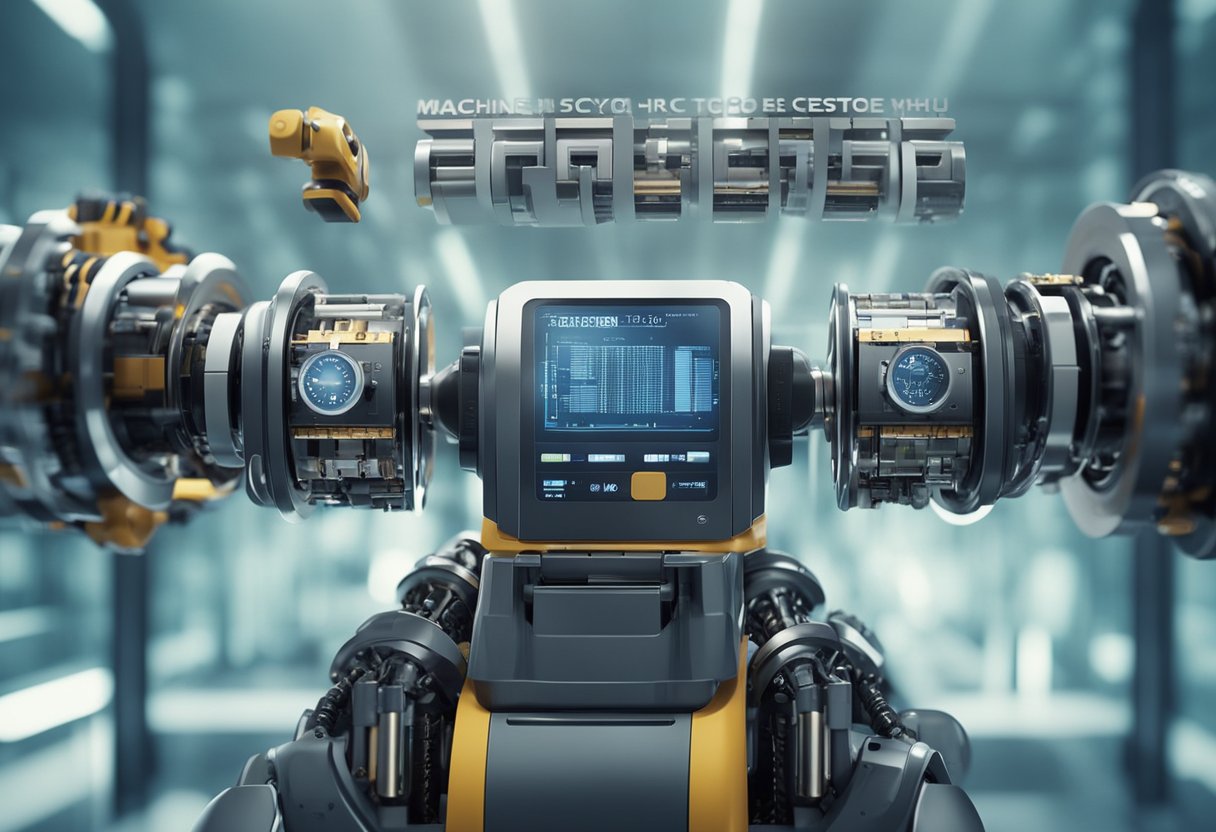
The machine cycle encompasses the core functions a microprocessor performs to execute instructions. Each stage correlates with intricate processes underlined by CPU architecture. Third-party voice describes how pipelining and clock cycles interplay significantly to enhance efficiency.
Pipelining is a method that allows overlapping different stages of machine cycles within the CPU. It divides the processor cycle into distinct stages so that multiple instructions undergo different stages of the cycle simultaneously. This approach can drastically improve CPU throughput, as successive instructions do not need to wait for the previous ones to complete.
The number of clock cycles required for processing instructions varies. A single clock cycle might suffice for a simple instruction, while complex operations may span multiple cycles. The clock speed, expressed in hertz (Hz), connotes how many cycles a CPU can perform per second, thereby defining its efficiency.
Microprocessor designs commonly integrate these concepts, forming various CPU architectures. Advanced architectures might implement multi-core configurations, where each core executes machine cycles independently, or utilize superscalar design, which involves issuing multiple instructions in a single clock cycle.
A machine cycle orchestrated by intricate CPU architecture ensures the seamless execution of instructions by a microprocessor. Full comprehension of these advanced concepts reveals the microprocessor’s potential to efficiently process tasks in high-speed, sophisticated computing environments.
Processor Performance and Machine Cycle
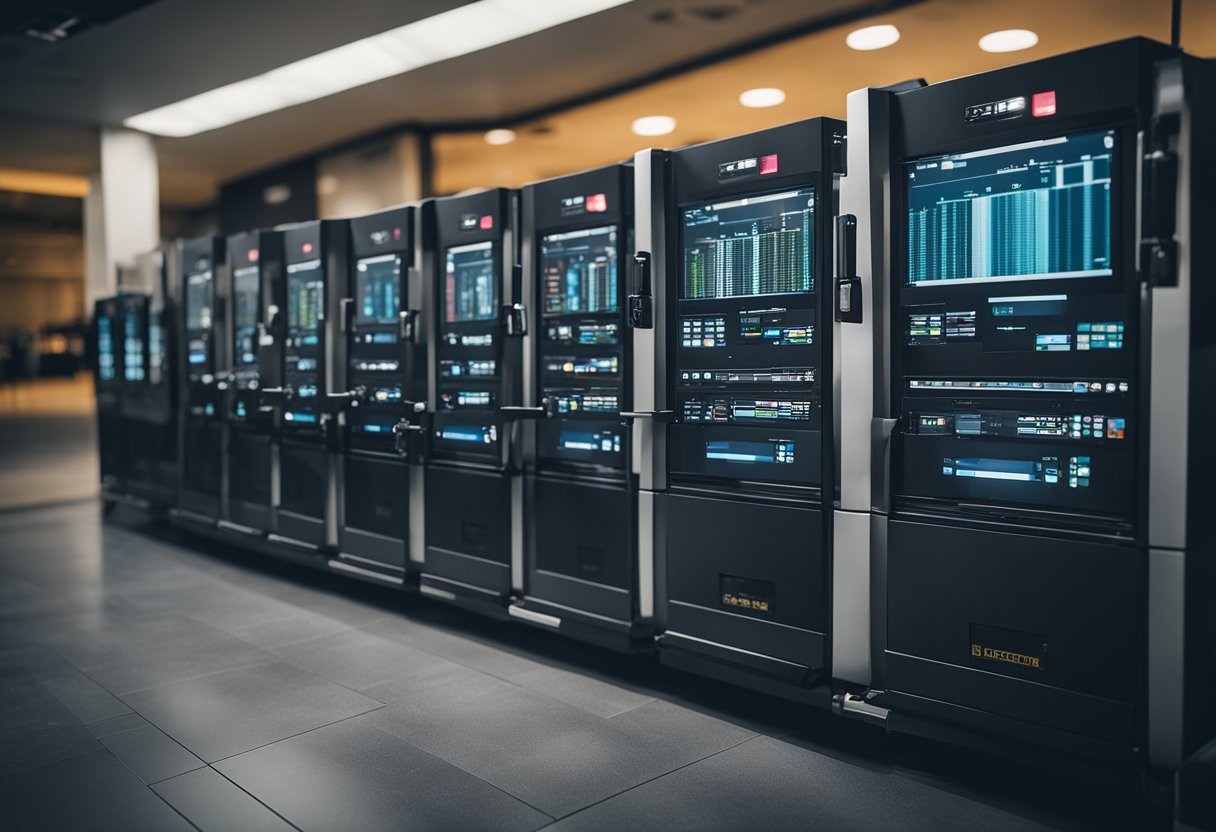
The performance of a microprocessor is fundamentally linked to its machine cycle, which is comprise of four essential steps: Fetch, Decode, Execute, and Store. These steps directly influence how efficiently a processor can complete instructions.
Clock Speed, measured in megahertz (MHz) or gigahertz (GHz), is a critical factor in processor performance. It determines how many machine cycles a processor can complete per second. A higher clock speed usually translates to a faster processor, assuming all other factors remain constant.
Microprocessors use a technique known as pipelining to improve upon the basic machine cycle. Pipelining allows a processor to begin fetching a second instruction before the first has been completely processed through the machine cycle. This overlapped processing optimizes the time spent on each instruction, contributing to a more efficient processor cycle.
Table: Key Factors in Processor Performance
| Factor | Description |
|---|---|
| Clock Speed | Higher values typically result in faster processing of machine cycles. |
| Pipelining | Enables overlapping of machine cycle steps, reducing latency. |
It should be observed that clock speed alone does not determine processor performance. The microprocessor’s architecture and the efficiency of its instruction set also play pivotal roles. A processor that requires fewer machine cycles for each instruction demonstrates higher efficiency and can outperform a processor with a faster clock speed but less efficient use of its machine cycles.
In summary, understanding the machine cycle and how various factors like clock speed and pipelining enhance its execution is crucial to gauge the overall performance of a microprocessor.
The Role of Machine Instructions
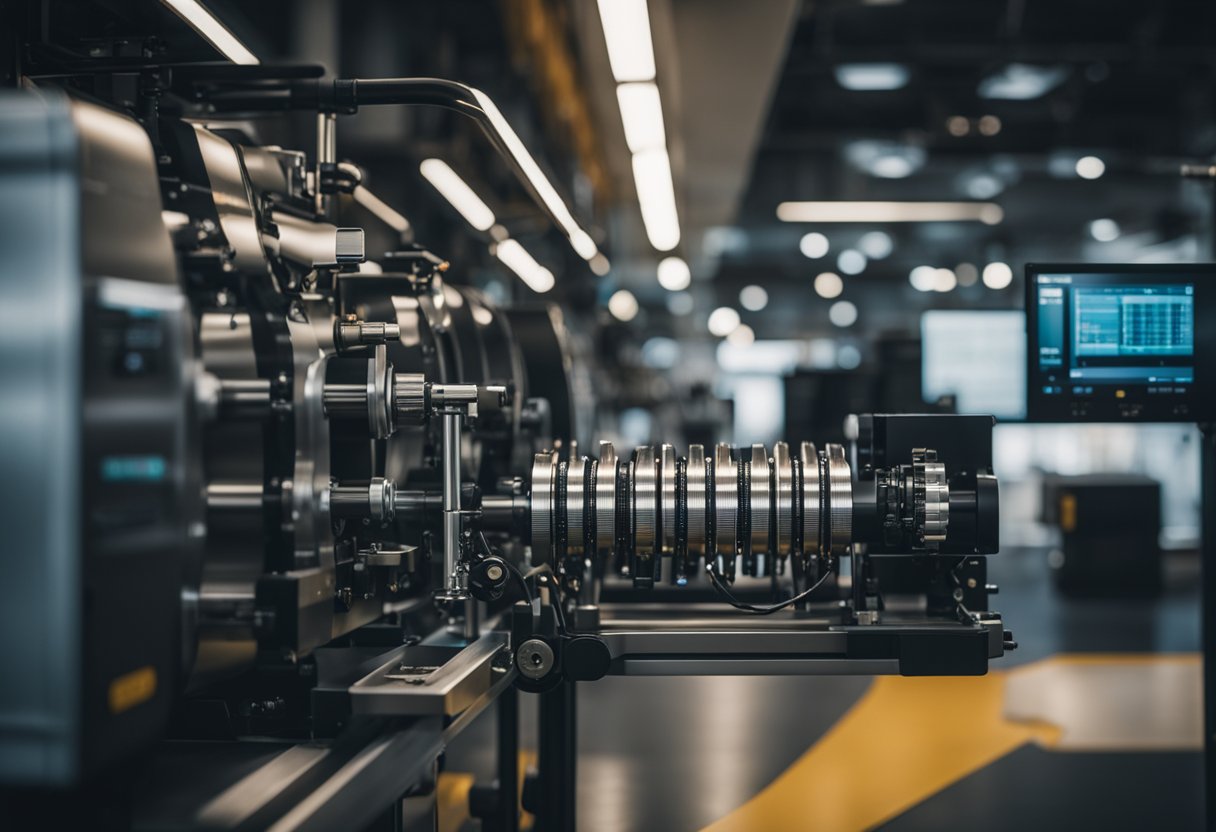
Machine instructions are the bedrock of computer functionality. Each instruction conducts a specific operation within a computer’s central processing unit (CPU), offering a blueprint in the form of binary code. These instructions are fundamental to the machine cycle, a process critical for a computer’s operation.
Binary Instructions form the core of machine language—the lowest-level programming language encoded in binary, which is directly understood by the computer’s hardware. They typically consist of an operation code, commonly known as op code, and operand information. Op codes signify the operation to be performed, such as addition or subtraction, while operands are entities on which these operations act.
Machine Language is inherently linked with the machine instructions, as it dictates precisely what actions the machine carries out. Consisting entirely of ones and zeros, it renders instructions in a format congenial to the CPU’s processing capabilities. Even high-level programming languages ultimately translate back to machine language so the hardware can execute them.
A table detailing the machine cycle steps:
| Step | Description |
|---|---|
| Fetch | Retrieving the binary instruction from memory. |
| Decode | Deciphering the instruction to understand the necessary operation. |
| Execute | Performing the operation as dictated by the op code. |
| Store | Writing the result back into memory. |
Machine instructions are stringent and explicit, leaving no room for ambiguity as they dictate the precise actions that a computer must perform. It’s their rigor and clarity that allow a vast array of tasks to be accomplished with consistency and precision.
Memory Units and the Machine Cycle
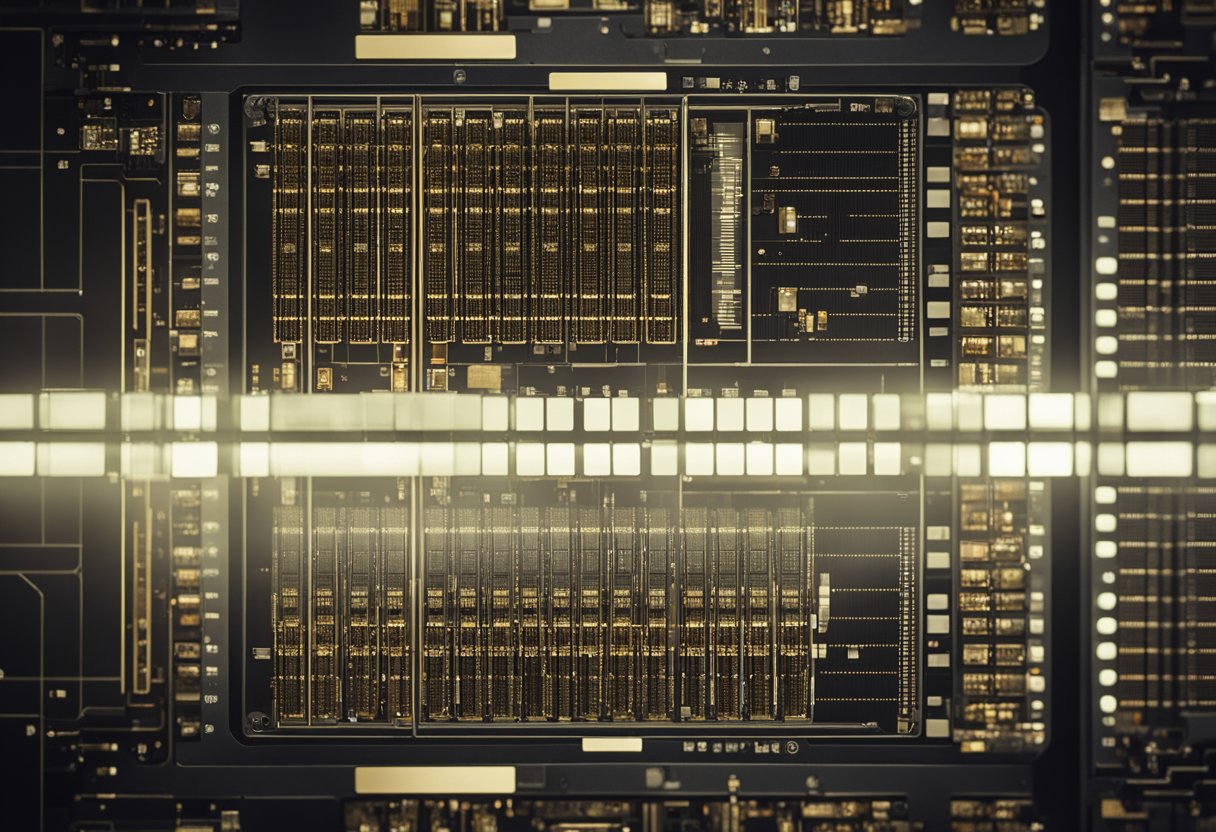
In the context of a computer’s operation, the machine cycle is integral to the functionality of the Central Processing Unit (CPU). It is composed of four fundamental steps:
- Fetch: Retrieve an instruction from memory.
- Decode: Interpret the instruction.
- Execute: Perform the operation.
- Store: Save the result to memory.
Each of these stages interacts with different memory units that vary in speed and storage capacity.
Random Access Memory (RAM), often referred to as main memory, plays a crucial role during the machine cycle. RAM provides the necessary space for a computer’s active processes. It is here that instructions are fetched and stored temporarily during the execute phase.
Memory expectations for the machine cycle stages:
- Fetch & Decode: Instructions are fetched from RAM, leveraging its fast access time.
- Execute: CPU’s internal registers manipulate data based on the decoded instructions.
- Store: Processed data is written back into RAM, and sometimes to secondary memory as needed.
Secondary memory, such as hard drives or SSDs, is slower but provides long-term storage. Data from secondary memory might be loaded into RAM during start-up or when applications are launched.
Table 1: Memory Unit Interactions with Machine Cycle
| Step | Memory Unit Utilized |
|---|---|
| Fetch | RAM |
| Decode | RAM & CPU Registers |
| Execute | CPU Registers & ALU |
| Store | RAM & Secondary Memory |
While RAM is pivotal for speed during the machine cycle, the combination of various memory units ensures both efficient processing and the safekeeping of valuable data. Understanding this interplay helps in appreciating the complexity and the precision of modern computing operations.
Software Interaction with Machine Cycles

When software is executed, it directly interacts with the machine cycle of a computer’s Central Processing Unit (CPU). Every piece of software, be it a simple text editor or a complex video editing suite, requires the CPU to complete cycles of instruction processing to carry out tasks.
The machine cycle encompasses four main steps: fetch, decode, execute, and store. Here is how the software interacts with each stage:
- Fetch: The CPU retrieves the necessary instruction from the memory. This is the initiation point where the software’s need translates into a command for the CPU.
- Decode: This instruction is then translated into a set of signals that the CPU can understand. The decoder within the CPU bridges the gap between high-level software instructions and low-level machine commands.
- Execute: The CPU proceeds to carry out the commands.
- Store: Finally, the results of the execution are written back into memory, concluding the cycle.
For multimedia software, such as video editors, the instruction cycle is critical for rendering frames and applying effects, which requires these cycles to occur millions of times. The faster and more efficiently these cycles occur, the smoother the software performs its function.
Each cycle is governed by the clock speed of the CPU and denotes one tick of the clock during which an instruction can complete a transition through all four steps. Software designers must understand the intricacies of machine cycles to optimize their applications’ performance, ensuring efficient utilization of the CPU’s capabilities.
Input/Output Operations and Machine Cycles
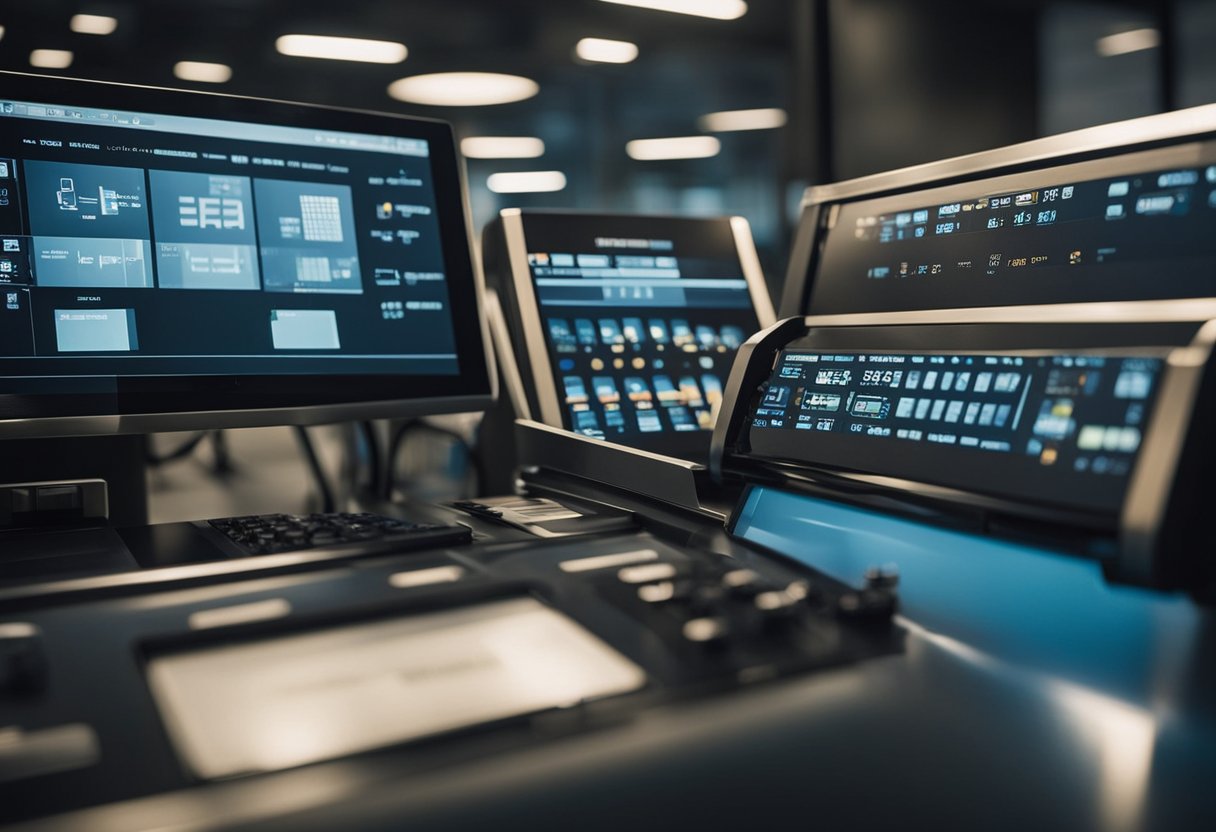
In a computing context, the Machine Cycle refers to the process a CPU undergoes to execute instructions. This cycle is essential to understand how a computer handles input and output (I/O) operations, involving output devices and ports under the supervision of the control unit.
The Four Key Steps:
- Fetch: The cycle begins as the control unit retrieves an instruction from the computer’s memory.
- Decode: Next, the control unit interprets the instruction, determining which operation to perform.
- Execute: The execution step is where the instruction becomes an action. If the operation involves I/O, the control unit manages the data transfer between the CPU and the output devices through the relevant ports.
- Store: Lastly, the cycle concludes with the storage of the result back into the memory, ready for future use.
During I/O operations, output devices might include monitors, printers, or speakers, and each is managed through specific ports, such as HDMI or USB ports. These ports are the interface through which data travels from the CPU to the output device.
The control unit orchestrates these steps, ensuring that the I/O operations are performed correctly and efficiently. It acts as the traffic director, signaling when data should be sent to an output device and confirming the correct completion of the Machine Cycle.
By adhering to these well-defined steps, computers maintain order and efficiency during I/O operations, directly impacting their overall performance and reliability.
Understanding CPU Architecture
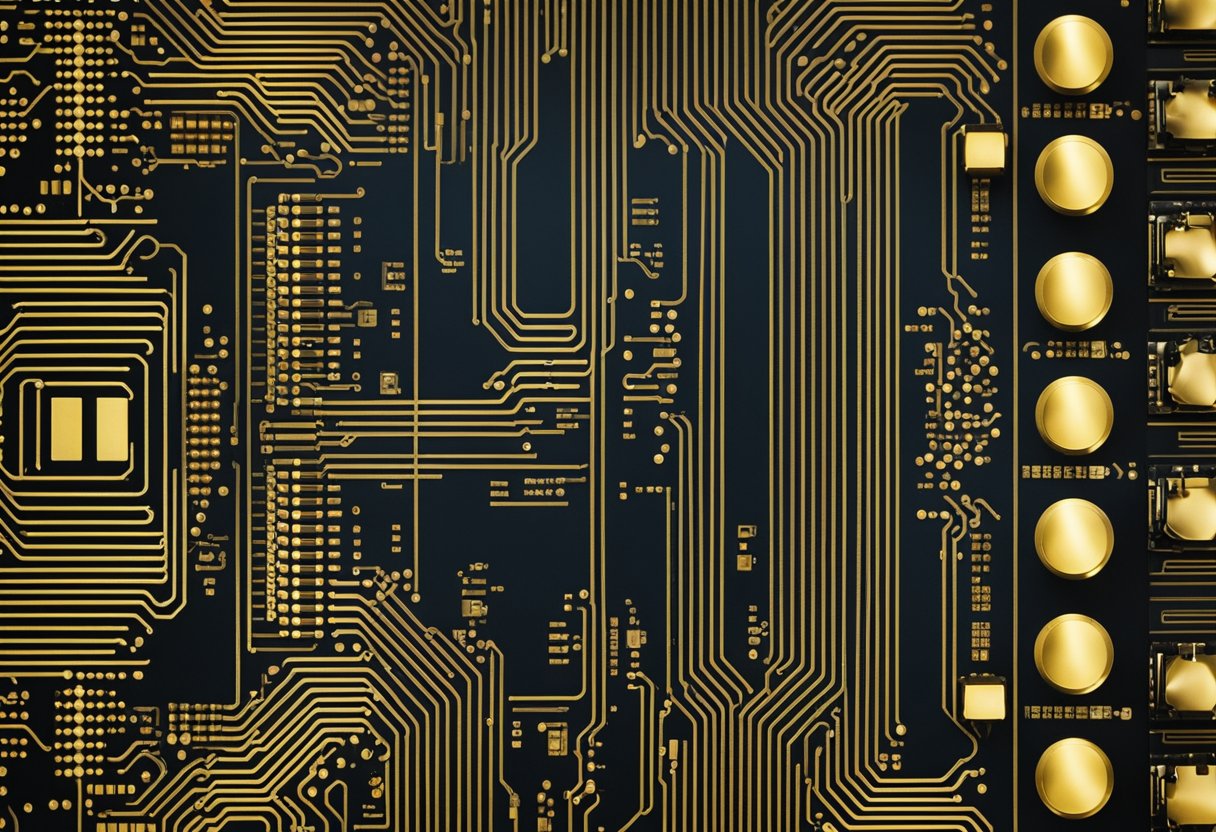
Central Processing Unit (CPU) architecture is fundamental to the operation of modern computers. At its core, the CPU is composed of several key components that work together to process data.
Control Unit (CU): This component orchestrates the activities within the CPU, directing the flow of data between the CPU and other devices. It decodes instructions and determines the sequence of operations needed to execute them.
Arithmetic Logic Unit (ALU): As the computational brain of the CPU, the ALU performs arithmetic and logic operations. It deals with operations such as addition, subtraction, and bitwise operations that are essential steps in processing data and executing commands.
Registers: Registers are small storage locations within the CPU that hold data, instructions, or addresses temporarily during execution cycles. Think of them as high-speed scratchpads for the CPU’s immediate use.
The efficiency of a CPU and its ability to process instructions quickly is often linked to its architecture, which can range from simple designs suitable for low-power devices to complex designs for high-performance computing.
A typical CPU operates by executing a series of steps commonly known as the machine cycle. These steps involve fetching an instruction from memory, decoding the instruction to understand what action is to be taken, executing the action, and then storing the result back into memory.
Below is a summarized list of the machine cycle steps:
- Fetch: Retrieving an instruction from the memory.
- Decode: Translating the instruction into signals for other parts of the CPU.
- Execute: The ALU performs the instructed action.
- Store: Writing the result to a memory location or register.
Adhering to this cyclical process allows the CPU to perform complex tasks via these fundamental operations, laying the groundwork for more complex functions in computer architecture.
The Impact of Artificial Intelligence on Machine Cycles

Artificial Intelligence (AI) significantly enhances various aspects of machine cycles by introducing smart automation and data-driven decision-making processes. AI systems can provide detailed instructions for machine operations, ensuring that machines work more efficiently and effectively.
One of the pivotal areas where AI makes a difference is in data management. AI algorithms are designed to sift through vast amounts of data, performing analyses that would be impractical for humans to conduct due to the scale of the data sets involved. This capability leads to more informed steps in the machine cycle, such as predictive maintenance, which hinges on AI’s ability to anticipate machine failures before they happen.
In the realm of machine learning algorithms, AI continues to push the boundaries of what’s achievable. These algorithms adapt to new information and conditions over time, which allows for continuous improvement in machine performance without direct human intervention. For example, AI can evaluate the efficiency of different machine cycle phases and suggest optimizations that save time and resources.
Here’s how AI’s influence can be broken down into distinct impacts on machine cycles:
- Automation and Precision: AI facilitates the automation of complex tasks with high precision.
- Predictive Analytics: Utilizing data, AI can predict machine breakdowns, reducing downtime.
- Dynamic Adaptation: Machine learning empowers machines to adapt to changing conditions, enhancing flexibility.
- Efficiency Optimization: AI examines patterns to streamline machine cycles for optimal performance.
As industries continue to incorporate AI, the effects on machine cycles become more pronounced, showcasing the technology’s role in driving innovation and efficiency across various applications.
Frequently Asked Questions

Understanding the machine cycle is critical for grasping how computers process information. This section provides clear, concise answers to common inquiries regarding the intricacies of machine cycles.
What are the core operations involved in a computer’s machine cycle?
The machine cycle consists of four fundamental operations: fetch, decode, execute, and store. These operations facilitate the processing of instructions and data within a computer.
Can you explain the difference between a machine cycle and an instruction cycle?
A machine cycle refers to the process of executing one instruction, including fetching, decoding, executing, and storing. In contrast, an instruction cycle includes all the stages a CPU goes through from the time an instruction is fetched from memory until it is completed.
What is the sequence of phases in a typical machine cycle?
The sequence of a typical machine cycle starts with fetching the instruction from memory, followed by decoding the instruction, executing the decoded commands, and concluding with storing the result back in memory.
How are instruction cycles and machine cycles represented in a process diagram?
Process diagrams typically represent instruction cycles and machine cycles as a series of linear stages or circular flows, illustrating the progression from one phase to the next and the repetitive nature of these processes within a CPU.
What terminology is commonly used to refer to the machine cycle?
Terminology commonly used to describe the machine cycle includes terms like fetch, decode, execute, store, and sometimes refer to just as the “processor cycle” or “CPU cycle.”
Could you define the instruction cycle as it relates to microprocessors?
The instruction cycle in the context of microprocessors is the period during which a single instruction is processed, which includes fetching the instruction, decoding it, executing it, and then storing any results. This cycle is fundamental to the operation of microprocessors.
